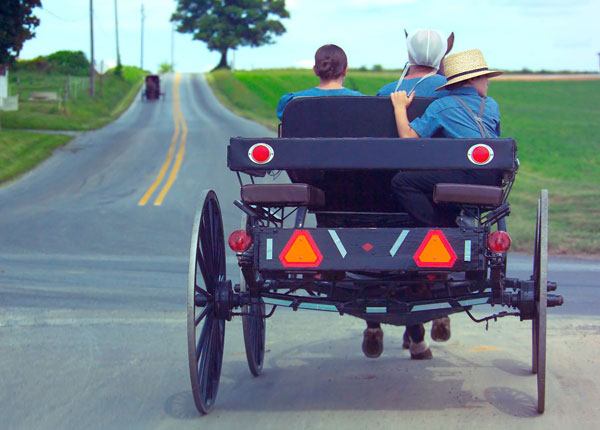
Driving on Rural Roads Safety Tips & Tactics: Minimizing Driving Risks
Updated Dec. 11, 2020Staying safe on rural roads depends on remaining alert, giving yourself the best possible view of the road ahead and making sure you have enough time to stop or maneuver to avoid a collision. The tips outlined here will keep you on track! Let’s start with the most important tactic for safe rural driving: keeping your speed to a minimum.
Reducing speed
You will have seen the words “reduce your speed” time and time again while reading through the rural driving section of this course. It truly is the best preventative measure you can take to avoid accidents and injury when driving in a rural environment (or any environment, for that matter). The slower you are traveling, the more time and space you will have to react and avoid potential dangers.
Motorists should drive comfortably within the legal speed limit, reducing their speed further if their view of the road ahead is impeded. If a hill, curved stretch of road, large vehicle or some other natural obstacle obscures your line of sight, you must slow down immediately. Reduce your speed in a smooth and controlled manner when:
- 1

You cannot see oncoming traffic because of the landscape, an obstacle or poor weather conditions.
- 2

Driving at night.
Visibility will be poor and nocturnal wildlife may enter the roadway. - 3

Approaching a slow-moving vehicle ahead of you or traveling toward you from the opposite direction.
- 4

Approaching a line of vehicles in the opposing traffic lane.
While it is important to keep speed to a minimum, you must not travel so far below the speed limit that you present a hazard to other motorists. A vehicle traveling at or just below the speed limit may have to brake suddenly when approaching you from the rear if you are moving too slowly.
Using headlights
Activating your headlights can improve visibility – even during daylight hours. Other road users will be able to see you sooner and spotting hazards will be easier. In some states, using your headlights on certain stretches of rural highway is compulsory. Check your state’s driving handbook for details and look out for signs indicating that headlights must be active. Even if it is not a legal requirement, keeping your headlights on during the day on treacherous rural roads is advisable.
Avoiding fatigued driving
Driving on rural roads when you are sleepy or generally fatigued is a very bad idea. Motorists are extremely susceptible to being inattentive on rural highways anyway - without factoring tiredness into the mix! Collisions as a result of driver fatigue are substantially more likely to occur on rural roads, as motorists have fewer alternative transport options and must often travel long distances.
Do not take any chances if you feel yourself tiring on a rural road. Find the next safe place to pull over and consider taking a short nap before proceeding on your journey. If stopping is not possible, wind the window down or adjust the air-con to help keep yourself alert and proceed with caution. The National Highway Traffic Safety Administration estimates that roughly 41,000 crashes involved fatigued drivers, in 2015 alone.




